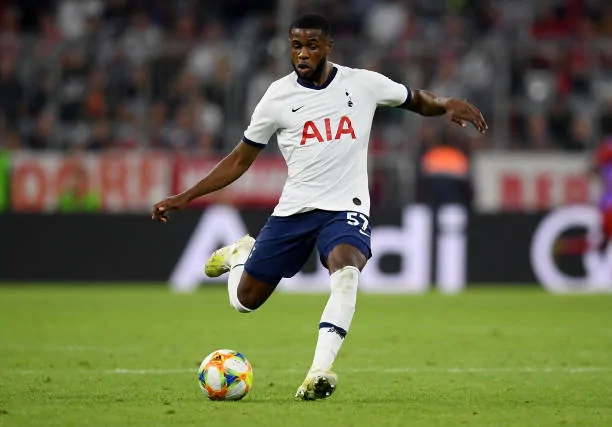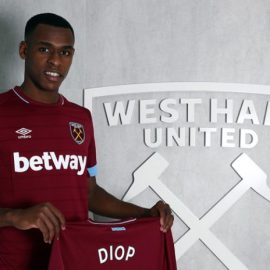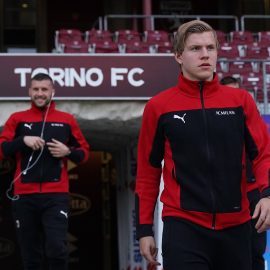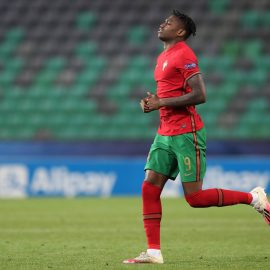In football, as it’s played today, central midfielders have become the most important players on the pitch. Due to the growing importance of the transition game, the roving role of a post-to-post player demands competence in both defense and attack.
Finding the right player, however, is difficult. The position demands an innate intelligence. The ability to improvise and shift on the fly. Caught out of position, a central midfielder can leave the defense open and vulnerable to quick counterattacks. Marooned at the back, often in position to fill in holes left by marauding full backs or wingers charging into midfield, they may also leave the striker(s) isolated if they can’t move up the pitch in support.
Consequently, knowing how to utilize a central midfielder is absolutely the key tactical decision a manager has to make.
The phenomenon of our times is the notion of a deep–lying play maker. One who sits deep in a pocket in front of the defensive line, using a virtuoso’s quiver full of long and short-range arrows. Attacks and counterattacks are begun using a wide range of passes.
Historically, a deeper midfielder had been what, in the late 60s and early 70s, was known as a ‘sweeper,’ a hard man, an enforcer. Someone capable of thuggery, mayhem and gamesmanship, but also blessed with the ability to tackle like a ton of bricks. Beyond protecting the defense, and breaking up plays, his job usually stopped at passing the ball to more creative players around him. Theoretically, at least, this type of player needn’t be the best natural footballer. All that was necessary was a good sense of tactical discipline, brute strength and tackling ruthlessness.
A deep-lying play maker, however, has no particular need for brawn. Coaches who use a deep-lying play makers are generally absorbed in playing possession football. Atypically, instead of utilizing the long kick, the goalie rolls the ball to a defender, who, in turn, passes to the play maker sitting just in front and sets the attack in motion. Andrea Pirlo and Michael Carrick are the finest examples of deep-lying play makers currently in the game. No disrespect is meant toward Claude Makalele, once the absolute epitome of said job description; unfortunately, he is now three seasons past his best, although still strutting his stuff with Paris S.G.
Andrea Pirlo
Pirlo began with a small club, Brescia, before moving to Internatzionale Milano. At Inter he played a more attack-minded role. The ideal at the time was that Pirlo, as an attacking midfielder, be capable of both working on the wing and inside. He’d be fed by a sweeper, have a full panoramic take on the action in front of him, pass short and long balls and then run to slot in wherever a forward attacked, while, at the same time, he’d always be looking to make that single assassin’s pass, the one which rips apart the opposition defense.
Bought to connect with the defensive midfielder, Vladimir Jugovic, and enhance the attacking skills of Alvaro Recoba and Christian Vieri, Pirlo found himself at odds with the silky skills of the Uruguayan. Recoba has a lot of talent and a marvelous ability to hold on to the football. Unfortunately, his ‘ball hog’ style and an innate unwillingness to pass and share left Pirlo lost.
Sold to A.C. Milan, Pirlo found his dream coach in Carlo Ancelotti. A rapturous admirer of the little Congolese magpie, Claude Makalele, Ancelotti loved his minimalist, vanity-free style. Makalele won the ball with his quick feet, not savage tackling. He would hold the ball, assess a strategic situation and quickly fire off a killer pass.
Ancelotti saw that Pirlo’s extensive passing skills would be well suited to a similar, deeper role and moved to play him further back in midfield next to Gennaro ‘Rhino’ Gattuso, the archetypal midfield enforcer. Thus Gattuso become Pirlo’s hard-core right-hand man. Rhino was all over the pitch while Pirlo probed, winning the ball, allowing the slightly-built Pirlo the freedom to work his magic.
Since his move to Milan, Pirlo has won one Scudetto, two Champions League titles, and, along with Rhino and a second tough customer, Daniele De Rossi, was instrumental in Italy’s 2006 World Cup triumph. It’s not hard to make a case for him as the best player in the world in the deep-lying role and it’s not surprising that there are rumours that Ancelotti would like to take Pirlo to Stamford Bridge, no matter what the cost. If Ancelotti gets the go-ahead from Chelsea’s oil oligarch owner, Roman Abramowich, Pirlo is going to cost Chelsea at least £40M.
Michael Carrick
Michael Carrick came through the ranks of the old youth conveyor belt at West Ham United, alongside Joe Cole and Rio Ferdinand. He quickly gained a reputation for his long stride and accurate passing, earning himself a PFA Young Player of the Year nomination for the 2000/01 season.
However, once the Hammers were relegated from the Premier League, Carrick decided he wanted a new club. Consequently, the Geordie kid, sold to Tottenham Hotspur, went through a renaissance under the tutelage of Coach Martin Jol and his staff. His talent, overshadowed at the Hammers by Joe Cole’s flash bag of tricks, only needed a little nurturing to bloom. Very much instrumental in Spurs’ finishing in fifth place in the 2005/06 season, Carrick’s splendid passing displays caught the eye of Sir Alex Ferguson, who spent £18M on him in the summer of 2006.
Ferguson, having never properly replaced the divine passing skills of David Beckham, long since sold to Real Madrid, felt he had finally obtained the missing link for his team to once again win the European Champions Cup. Fully matured for the 2007/06 season, Carrick’s radar passing dissected the likes of A.S. Roma, Olympique Lyonnais, Villareal and Barcelona on the way to winning it all.
Unlike Pirlo, Michael Carrick has not made the most of his England chances. England, although deficient in other positions, have a wealth of players capable of shining in a central midfield role. An impressive performance in Berlin alongside Gareth Barry in England’s 2-1 win over Germany clearly showed that he could play the international game.
The problem for Carrick has been, however, that his main rivals, Frank Lampard and Stevie Gerrard are flair players, much more intent on scoring than being the kind on-field instigator that is Carrick. Tooled to suit the more spontaneous game of give-and-go utilized by Gerrard and Lampard, Fabio Capello’s England team just don’t seem to need Carrick’s game.
Still, there are many of us out there who believe that the opposite is true. Lampard and Gerrard will shine against ordinary and mediocre teams; but, that Carrick’s passing game will be exactly what England need to take their game to the next technical level if they want to defeat the likes of Brazil, Spain, Argentina, France and Italy at the 2010 World Cup.
Premier League Playmakers
In the recent 2008/09 English Premier League season, Xabí Alonso, Jermaine Jenas and Stilian Petrov played key roles in midfield for their clubs, but proved slightly less successful. At Liverpool, Gerrard and Torres relied on Alonso to begin attacks from a deep position, dexterously feeding the short ball to Gerrard and, longer, usually over the top passes for Torres. Opta Statistics clearly showed that Alonso was the first player in the league to complete 1,000 successful passes.
How weird that Alonso had a career season while his coach, Rafael ‘The Tinker Man’ Benitez was desperately trying to sell him in order to buy the crude talent of Gareth Barry. Alonso’s problems are less in his style of play, because he is capable of doing everything Pirlo and Carrick can do only with more physicality, than the odd tactics Benítez uses to support him. Possessed of probably the finest defencive midfielder in the world in Javíer Mascharano, Benítez prefers that he run interference for the second striker, Gerrard. rather than protect Alonso.
Coach Harry Redknapp of Spurs has also chosen to marginalize a player who has the talent to be a world-class deep-lying midfielder in Jermaine Jenas. Redknapp has preferred to defer to the physicality and speed of Wilson Palacios and Didier Zokora, even though neither one of them is much of a passer.
Although Zokora has been sold, Redknapp seems to prefer using the big bench-warmer, Tommy Huddlestone in his place, rather than using Jenas’ more sophisticated finesse style. Things will look up for Jenas, however, as Inter-Milan’s boss, Jose Mourinho, aims to buy the lad use to replace the ageing Patrick Veiera in partnership with his midfield enforcer, the wide-bodied Sulley Muntauri.
Stilian Petrov was the most consistent performer for a callow young Villa team which flirted regularly with the Premiership top four in the first half of the season. Petrov’s long range passing ability complemented Villa’s quick-on-the-break counterattacking style of play. Having mostly played on the wing in the Scottish Premier League at Glasgow Celtic, Petrov found himself competing with three young speedy wingers in Ashley Young, James Milner and Gabriel Agabonlahor.
Under the wise tutelage of coach Martin O’Nell, Petrov has found a brand new niche as a deep-lying midfielder. If Villa’s erratic defensive midfield pair, Nigel Reo-Coker or Steve Sidwell, manage to get it together, Petrov could yet take Villa to the next level.
Serie A Playmakers
Pirlo definitely rules in the deep-lying role in Italy’s Calcio, although two young pretenders, Udinese’s Gaetano D’Agostino and A.S. Roma’s Alberto Aquilani have stepped up the competition.
Like Pirlo, D’Agostino used to play in an advanced role just behind his strikers at his old club, A.S. Roma. Unable to make the grade at Roma, where Francesco Totti stood between him and the first-team football, D’Agostino eventually ended up playing for Messina before being sold to Udinese. In D’Agostino’s second season in Udine, Pasquale Marino was hired as coach. An Ancelotti acolyte, Marino took D’Agostino’s passing ability and moved him to deep in the midfield. The midfielder’s long range passing then caught the eye of the national coach, Marcelo Lippi, who, because Pirlo was suspended over a red card incident, called D’Agostino up to the full Italian squad for the first time in November 2008.
D’Agostino made his first appearance for the Azzurri against Northern Ireland in June 2009. His other rival for an Italian national team place, Alberto Aquilani, is much more physical than Pirlo or D’Agostino, but lacks that penchant for executing the perfect killer pass. No wonder he’s being chased by Italy’s big three, Chelsea and Liverpool.
Surprisingly, the role of the deep-lying play maker is still conceptually new. Pirlo, Petrov and D’Agostino have revived fairly ordinary careers. An apt conclusion is that there are a number of players out there with the ability to play in that position but don’t know it, and, more surprisingly, coaches don’t seem to know it, either.
The Petrov example, because he was such a clever ‘jinky’ winger, might lead you to imagine that any player with high-quality technique and ball-distribution skills, like, say, Kieran Richardson of Sunderland, Chris Eagles of Burnley or Simeo Sabrosa of Atletico Madrid, are naturals for the job. A certain kind of vision, an ability to relax and a unique gift of intellect are necessary for this kind of player to succeed, however. Accompanied by a hard man, a creative deep-lying midfielder has that bit of protection he needs in order to make a positive impact on game day. He is very much like a quarterback in American Football.
The role can clearly play a big part in the game everywhere. In Italy the pace of the game is slower and the gamesmanship of defenders allows any deep-lying midfielder constant access to the ball.
Interestingly, in England, where the game is often played at a frantic, frenetic pace, midfielders get little time on the ball; nevertheless, the role of the deep-lying play maker can be utilized to allow flair players an extra second to pick out a pass.
Only in Spain, where every player seems to want to hold onto the ball, will the concept probably not work.
Being converted in soccer terms is like being Born Again in the Real World. Revival=Survival!!!
Find the best new betting sites to wager with today. Our comprehensive guides review PayPal betting sites and 5 pound deposit betting sites.
Add Sportslens to your Google News Feed!






